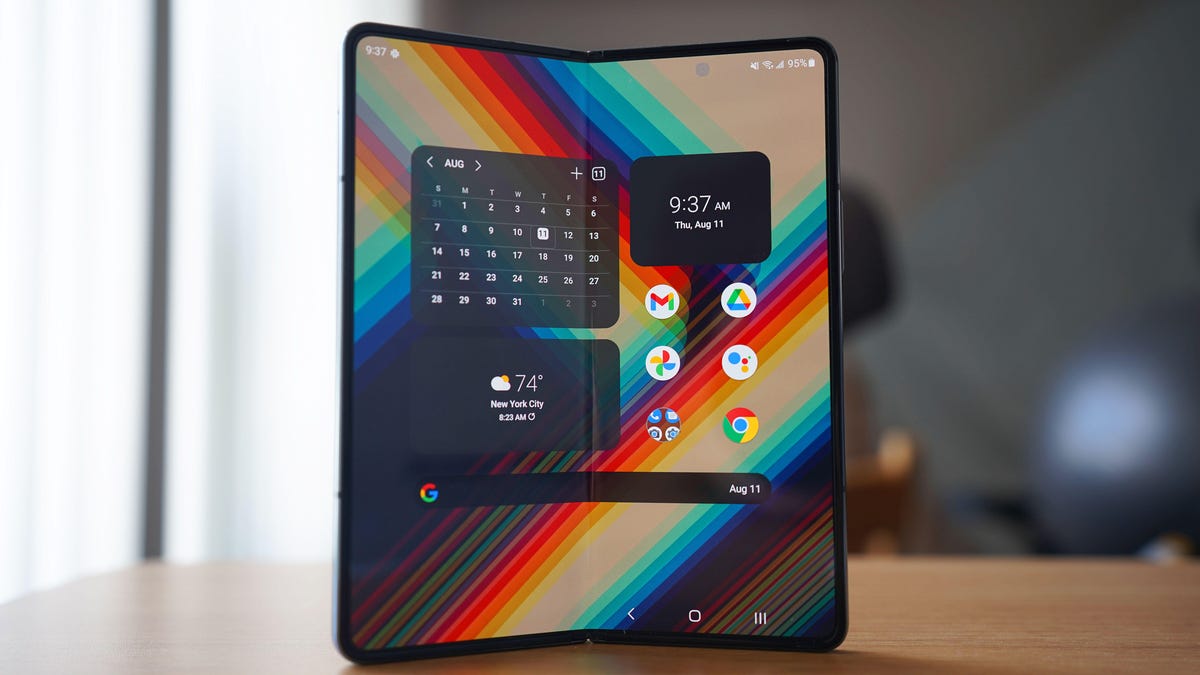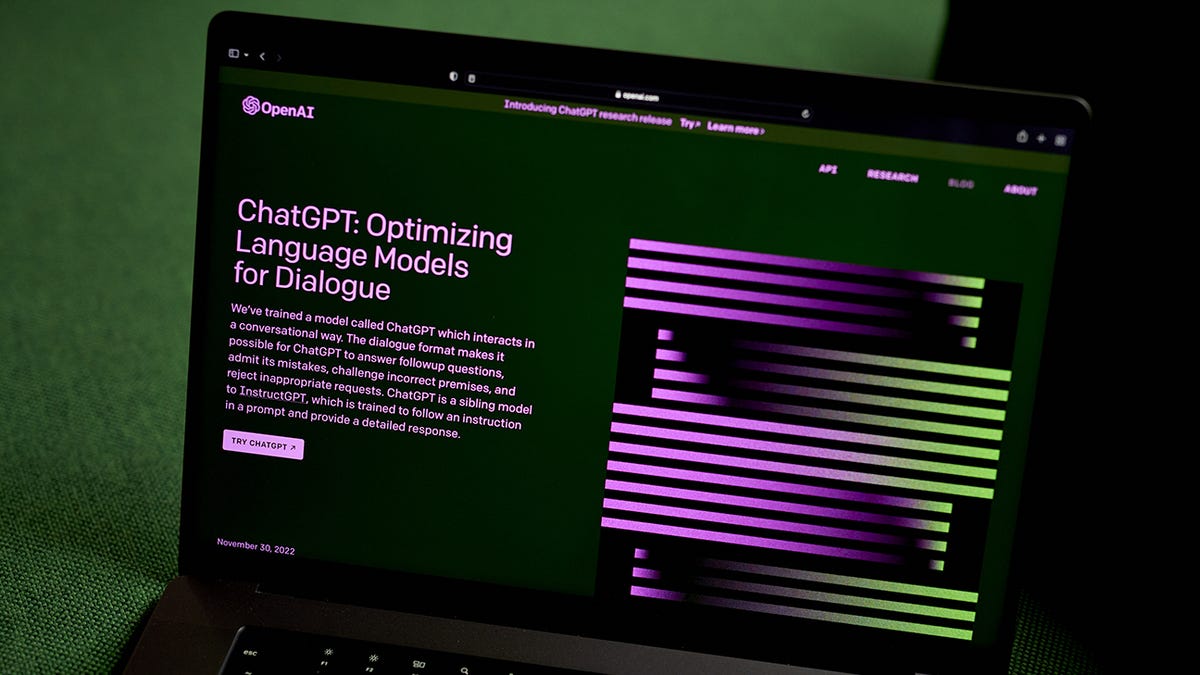Samsung Galaxy Z Fold 4 review: A familiar, exciting first impression
Pros
- 1,000 nits of brightness is a practical upgrade
- Lighter construction means less hand fatigue
- Android 12L makes multitasking intuitive and user-friendly
Cons
- Battery life is a concern
- Still expensive at $1,799
- Cover Screen remains awkward to use
Since the very first Galaxy Fold, Samsung has made it clear that it believes the future of mobile computing lies within handsets that can shape-shift from regular slabs to large-screen tabs.
To reach this apex of smartphone engineering, the company has gradually built and tested its Z Fold line, with enough skepticism and pushback to fuel user-driven refinements along the way. Today, Samsung looks to continue its dominance in the foldable market, carrying over a 90% market share from 2021.
The Galaxy Z Fold 4 is the company’s latest attempt at convincing the masses that foldables are the real deal. Four years in, there’s a lot that Samsung still has to get right with the Z Fold. And even though the folding phone market remains one that is…well, collapsed of competition, there are high expectations for Samsung to finally give its flagship foldable the push it needs to warrant the price it demands.
While this review covers my first 48 hours with the Z Fold 4, exploring its design elements, software experience, and stand-out features, I’ll be putting the handset through its rounds over the coming weeks and updating you, ZDNet readers, segment by segment, day by day.
Specifications
|
Display (Main Screen) |
7.6-inch Dynamic AMOLED 2X with LTPO (1-120Hz refresh rate) |
|
Display (Cover Screen) |
6.2-inch Dynamic AMOLED 2X with LTPO (1-120Hz refresh rate) |
|
Dimensions (unfolded) |
130.1×155.1×6.3mm |
|
Weight |
263g |
|
Cameras |
50MP wide, 12MP ultra-wide, 10MP telephoto, 4MP front (inner), 10MP front (outer) |
|
Processor |
Qualcomm Snapdragon 8+ Gen 1 |
|
Memory and storage |
12GB RAM with 256GB, 512GB, 1TB |
|
Battery |
4,400mAh |
|
Durability |
IPX8 |
|
Software |
One UI 4.1.1 over Android 12L |
|
Colors |
Phantom Black, Beige, Greygreen, Burgundy |
|
Price |
Starting at $1,799 |
Design
Besides the new Greygreen and Burgundy colorways, the Galaxy Z Fold 4 could easily pass as last year’s Z Fold 3 by looks alone. That’s because Samsung had already done a satisfying job of building a framework that 1) can unfold into a 7.6-inch tablet, 2) is IPX8 certified for water resistance, and 3) fits snuggly in most, if not all, pockets.
The exterior is still treated with a soft-touch, matte-frosted coating, while polished aluminum streams down the sides, hinge, buttons, and ports. Considering how much grippier glossy textures are than satin ones — and the side of the phone being our hands’ main touchpoint — I like the industrial design choice here.
The new Greygreen finish is more grey than green. June Wan/ZDNET
Training weights, off
It’s only when you take a deeper inspection at the Z Fold 4’s slimmed-down bezels, rounded display corners, and noticeably lighter footprint (263g from 271g) that you will begin to notice what Samsung has been working on this past year. The latter of the physical changes is more practical than you would think, especially if you’ve held previous iterations of the Z Fold and since then conditioned the word “foldable” with “heavy”.
Coming from an eight-month-old Galaxy Z Fold 3, handling the lighter Z Fold 4 has been a breath of fresh, burdenless air. The less-frequent hand and arm strains are telling enough. Samsung says that it managed to achieve such a physical feat by removing a series of metals and plates under the displays and implementing a new, sleeker hinge system. Should you buy into the new design philosophy, you’ll be met with a foldable that weighs more like a phone and less like a tablet. That, in my opinion, is a plausible step toward mainstream acceptance. Now, Samsung just has to make the Z Fold thinner.
Also: Best Galaxy Z Fold 4 deals available right now
When closed shut, the Z Fold 4 is 15.8mm thick. June Wan/ZDNET
A blossoming display
The primary reason why anyone should buy a foldable is for its 2-in-1, small-screen-to-big-screen mechanic. The two displays on the Z Fold 4 are Samsung’s most refined duo yet, which puts the phone at the top of my foldable tier list. On the outer Cover Screen, you get a tall 6.2-inch, Dynamic AMOLED panel that can refresh from 120Hz down to 1Hz. The aspect ratio is a smidge shorter than the Z Fold 3’s but still causes the phone to feel more like a TV remote than anything else. Naturally, the keyboard typing experience on the Cover Screen remains a cramped nightmare for folks with larger fingers. Glide typing is your best friend when using the outer display.
The inner Main Screen, which measures at 7.6 inches for all your multitasking and power-user cravings, is just as optimized as the outer one. It, too, is boosted by Samsung’s Dynamic AMOLED technology, with the ability to ramp up to 120Hz for smooth-scrolling or slow down to 1Hz for still frames.
The Main Screen is plenty big for media consumption, multi-app browsing, and more. June Wan/ZDNET
What’s impressed me the most with the Z Fold 4’s displays is how much brighter they get compared to their predecessors. Samsung claims that both panels now emit 1,000 nits of brightness, doubling that of last year’s 422. From my past two days of meandering between office buildings, the subway, and New York City streets, I can attest to the Z Fold 4’s improved visibility. I even found booking an Uber — which required pinpointing my location on a bustling city map — a breeze in broad sunlight.
Also: Samsung aims to sell 10 million foldables in 2022, says company president
Everything hinges on the hinge
Samsung’s new and improved hinge is the heart of the foldable experience. Unlike the last three generations’ gear-based construction, the Z Fold 4 takes to a linear, rotation-based approach in order to slim down the thickness and weight of the hinge. I’ll have to see how the new assembly holds up over time. For now, it’s felt as robust and sturdy as ever.
Samsung knows a thing or two about balance and symmetry. June Wan/ZDNET
Software
Android foldables, at least the phone-to-tablet ones, are basically Android tablets. That means the software setbacks that tech aficionados rightfully call out Google for stick with the Z Fold. In an attempt to disrupt the norm, the Z Fold 4 launches with Android 12L, Google’s large-screen tailored operating system. The main appeal of Android 12L is the enhancement to apps that typically aren’t optimized for bigger displays.
On the Z Fold 4, popular services from Google and Microsoft take on a more desktop-like UI, segmenting different app components across the main 7.6-inch screen in a purposeful and tasteful manner. That’s not to say that every app has received the 12L treatment; Instagram and Twitter are still outstretched variants of their standard selves, and some less-popular apps can literally be unusable.
Also: Why the struggle stays real for Android tablets
7.6 inches is plenty of space to get playful with widgets, apps, and folders. June Wan/ZDNET
Desktop features at your fingertips
Within the Android 12L (under OneUI 4.1.1) experience are two new and improved productivity features: Taskbar and Flex mode. The former is similar to the Z Fold 3’s side-mounted app menu but is now positioned at the bottom of the screen and contains a row of quick-access apps, two most-recent apps, an app drawer button, and the standard navigation keys. It’s similar to iPadOS’s Dock feature, which is great. And there’s really no toggle to activate the Taskbar; it just automatically appears when you open an app.
A new bottom Taskbar keeps your most frequented apps available for quick access. June Wan/ZDNET
The game-changing aspect is not so much the capacity of the Taskbar, though. It’s the ability to snap up to three apps on screen by simply dragging and dropping from the dock. You no longer need to set app pairs or go to your recent apps tray to pick out ones to set for split screen, positioning each app window is as easy as dragging it to your desired area. The Z Fold 4 handles the rest by reorientating the other windows, much like how it would shift widgets and apps when you move those around in the homescreen.
I’ve always found multi-app setups cumbersome and worse to navigate around in, but the new Taskbar is actually intuitive and user-minded.
Flex mode is another recipient of the desktop transformation; it now presents a multi-finger, gesture-based trackpad when you open a whitelisted application (via the “Labs” settings) and position one-half of the Main Screen like how you would with a laptop lid. When activated, you’re able to browse the upper portion of your Z Fold 4 by tapping, swiping, scrolling, and even pinching in and out on the virtual trackpad.
Clearly, Samsung wants the Z Fold to replace your laptop. June Wan/ZDNET
Is this a gimmicky feature? Absolutely. Unless you’d like to relive the humble days of netbooks and miniature laptops, you’re better off interacting with the Z Fold 4 like the $1,799 handset that it is.
Stay tuned for more
My two days time with the Samsung Galaxy Z Fold 4 has been a familiar and exciting experience. As similar as it is to my older Z Fold 3, there are notable upgrades like the new camera system, productivity features, and Qualcomm Snapdragon 8+ Gen 1 processor that gives me a lot to look forward to as I further test the device.
Is the new Galaxy foldable worth its $1,799 listing price? Can the same 4,400mAh battery capacity power through the newer, more powerful device? Stay tuned to this full review for answers to those questions and more.
In the meantime, if there are any questions about the Galaxy Z Fold 4 that you’d like me to answer, leave a comment down below.





Pingback: gun shop
Pingback: go right here
Pingback: สินเชื่อโฉนดที่ดิน เปล่า
Pingback: Buy Viagra for hot sex